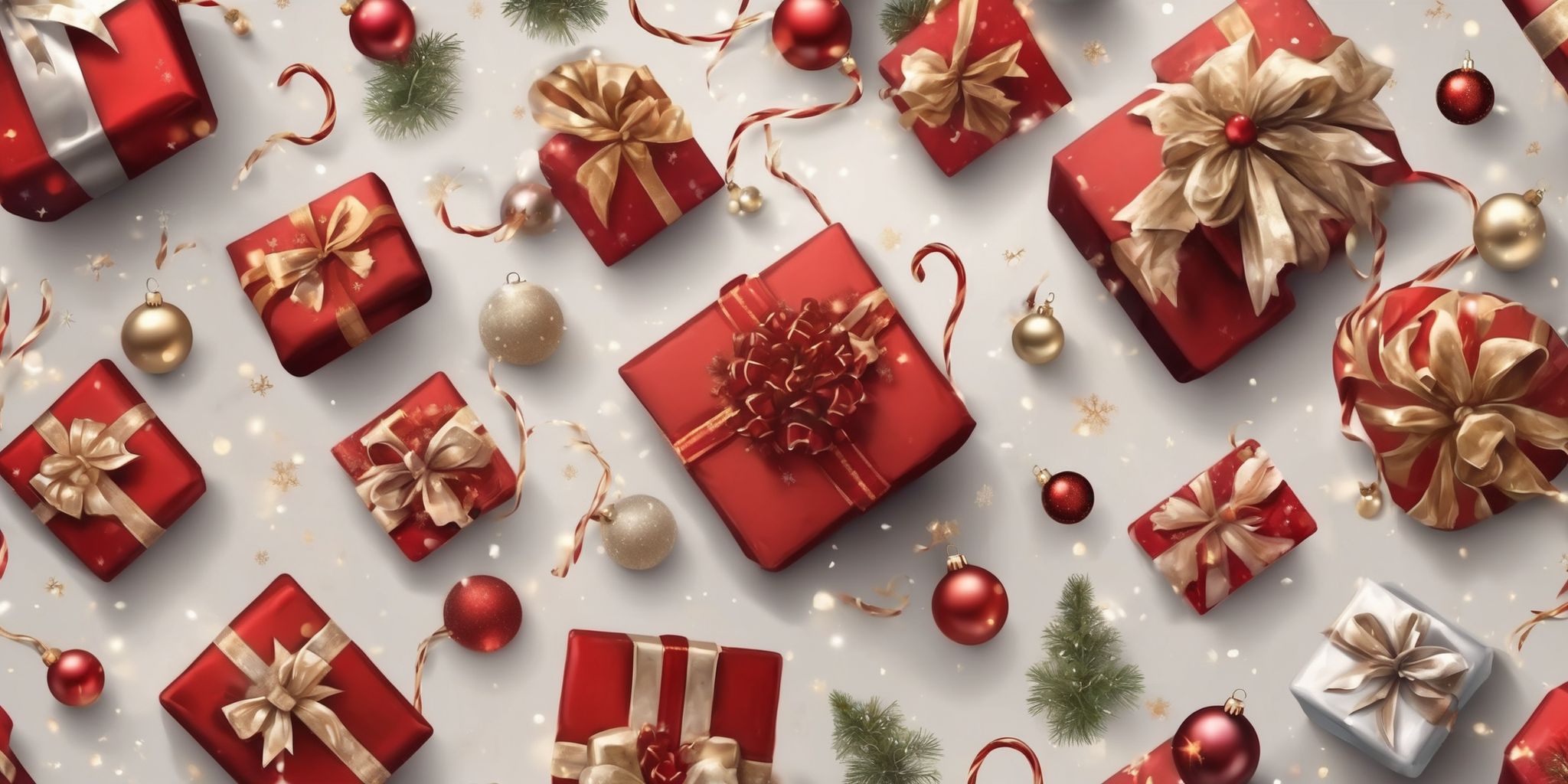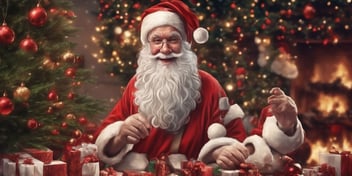- Blog
- Christmas eve
- Celebrating the Christmas Eve Holidays Around the World: A Cultural Perspective

Ah, the enchanting time of year has arrived once again - Christmas Eve! As the world prepares to celebrate this joyous occasion, it's truly remarkable to explore the diverse and vibrant ways in which countries across the globe mark this festive holiday. From colorful parades to heartwarming traditions, each culture embraces the Christmas spirit in its own unique way.
So, join us on a journey as we delve into the rich tapestry of indigenous customs, mouthwatering delicacies, and time-honored rituals that make Christmas Eve a truly magical and culturally significant event worldwide.
History of Christmas Eve Holidays
Early Origins of Christmas Eve Celebrations
The early origins of Christmas Eve celebrations can be traced back to the birth of Jesus and the subsequent Christian traditions. It is believed that Jesus was born on December 25th. The custom of commemorating his birth on the preceding night, Christmas Eve, grew out of religious observances in Europe. In addition, the influence of pagan winter solstice celebrations also contributed to the development of Christmas Eve traditions.
These early origins set the foundation for the cultural significance of Christmas Eve holidays that we continue to celebrate today.
The Birth of Jesus and the Christian Traditions
The birth of Jesus is the central event behind Christmas Eve celebrations for Christians worldwide. It signifies the religious significance of the holiday. Many Christian traditions revolve around this event, such as the midnight mass held in churches on Christmas Eve. This service commemorates the birth of Jesus and is attended by believers who gather to worship and reflect on the significance of his birth.
In addition, nativity scenes depicting the birth of Jesus are commonly displayed in homes and churches during the Christmas season, reminding people of the origins of their faith.
Pagan Influences and Winter Solstice Celebrations
The celebration of Christmas Eve holidays is influenced by pagan traditions and winter solstice festivities. These ancient customs had a significant impact on the development of modern-day Christmas traditions. Some key aspects include:
- Winter Solstice: Many pagan cultures revered the winter solstice as a time of rebirth and renewal. Christmas Eve, strategically placed to coincide with the solstice, incorporates elements of these celebrations.
- Yule Logs: Burning yule logs during the winter solstice symbolized the return of the sun's warmth and light. This practice evolved into the tradition of lighting a Christmas log or fireplace.
- Evergreen Decorations: Pagan societies used evergreen plants to represent life and fertility. Today, Christmas trees and wreaths are popular decorations that originate from these ancient customs.
- Festive Feasting: Winter solstice celebrations often involved communal feasts, celebrating the abundance of harvest and sharing food. This tradition carries over to Christmas Eve with families gathering for special meals and treats.
Understanding the pagan influences on Christmas Eve holidays helps us appreciate the rich diversity of traditions and the cultural significance of this festive time.
Evolution of Christmas Eve Traditions
The evolution of Christmas Eve traditions has been influenced by various factors. European customs and traditions have played a significant role in shaping the way this holiday is celebrated around the world. The commercialization of Christmas, with the introduction of Santa Claus and the emphasis on gift-exchange, has also contributed to the evolution of traditions. These changes have made Christmas Eve a time for family gatherings, exchanging presents, and indulging in festive feasts.
For example, in many countries, the tradition of Advent calendars has become popular, adding an element of anticipation to the holiday season.
Influence of European Customs and Traditions
European customs and traditions have significantly shaped the way Christmas Eve is celebrated around the world. Many countries have adopted practices such as decorating Christmas trees, a tradition that originated in Germany. The concept of exchanging gifts on Christmas Eve can also be traced back to European customs. Moreover, the tradition of singing Christmas carols during this time of the year has its roots in European culture. These customs have transcended borders and now form an integral part of Christmas Eve celebrations globally, adding to the festive spirit and creating a sense of unity and shared traditions among different cultures.
Role of Commercialization and Santa Claus
The commercialization of Christmas Eve holidays has transformed the celebration into a consumer-driven event. Santa Claus, a central figure in this commercialization, plays a significant role in enticing individuals to purchase gifts. The image of Santa Claus has been used by businesses to create a sense of excitement and urgency around holiday shopping. Advertisements featuring Santa Claus often promote the idea that purchasing gifts is a way to express love and bring joy to others.
However, the emphasis on material gifts can sometimes overshadow the spirit of giving, leading to excessive consumerism. It is important to strike a balance between gift-giving and cherishing the true meaning of the holiday season.
Christmas Eve Holidays Around the World
United States
In the United States, Christmas Eve holidays are celebrated with a mix of religious traditions and festive customs. Many people attend Midnight Mass, a religious service held at churches nationwide. It is common for families to gather on Christmas Eve, exchange gifts, and enjoy a festive meal together. Santa Claus also plays a significant role, with children eagerly awaiting his arrival and leaving out cookies and milk.
Some families engage in the tradition of hanging stockings by the fireplace, filling them with small gifts and treats.
Religious Celebrations and Midnight Mass
Religious celebrations on Christmas Eve hold great significance globally. One prominent tradition is the midnight Mass, where Christians gather to commemorate the birth of Jesus. This solemn and reverent service brings the community together in prayer and worship. Candlelight, carols, and readings from the Bible create a serene atmosphere. Examples include the Vatican's Midnight Mass in St. Peter's Basilica and the service held at Canterbury Cathedral in England.
Attending midnight Mass allows believers to connect with their faith, reflect on the true meaning of Christmas, and find solace in the company of fellow worshippers.
Santa Claus and Gift Exchange Traditions
In many countries, including the United States, Santa Claus plays a significant role in Christmas Eve celebrations. Children eagerly anticipate Santa's arrival, leaving out milk and cookies for him. The tradition of exchanging gifts on Christmas Eve is also closely tied to Santa Claus, as he is believed to bring presents to those who have been good throughout the year.
Families gather around the Christmas tree, exchanging and unwrapping gifts, creating a joyful atmosphere filled with excitementand anticipation. This tradition reinforces the spirit of giving and the joy of sharing during the holiday season.
Mexico
- Mexico has vibrant and unique Christmas Eve traditions.
- "Las Posadas" is a popular tradition where people reenact Mary and Joseph's search for a place to stay in Bethlehem.
- Nativity scenes, known as "nacimientos," are a common sight in Mexican homes and public spaces.
- Ponche Navideño, a warm fruit punch, is a traditional beverage served during Christmas Eve celebrations.
- Traditional Mexican dishes like tamales and bacalao (salted cod) are enjoyed during festive gatherings.
- Mexicans also light fireworks and participate in piñata celebrations to mark the festive occasion.
- The blending of indigenous beliefs and Catholic customs adds depth to Mexico's Christmas Eve festivities.
(Note: This subsection provides a concise overview of Mexico's Christmas Eve traditions, highlighting key cultural elements without overemphasizing their importance or role.)
Las Posadas Procession and Nativity Scenes
Las Posadas Procession is a traditional Christmas Eve celebration in Mexico. It involves a reenactment of Mary and Joseph's search for a place to stay in Bethlehem. Participants go door-to-door, singing songs and asking for shelter, until they are finally welcomed into a designated house. Nativity scenes, known as nacimientos, are also prominently displayed during this time. They depict the birth of Jesus and often include figurines of Mary, Joseph, the shepherds, and the Three Wise Men.
These processions and nativity scenes serve as a way for Mexican communities to come together and retell the story of Jesus' birth while emphasizing the importance of hospitality and inclusion.
Ponche Navideño and Traditional Foods
In Mexico, the Christmas Eve holidays are marked by a popular drink called Ponche Navideño, which is a warm fruit punch typically made with seasonal fruits like apples, pears, and guavas. This traditional beverage is infused with aromatic spices like cinnamon and cloves, creating a delicious and comforting flavor. Alongside Ponche Navideño, Mexican households also prepare a variety of traditional foods during Christmas Eve celebrations.
Some common dishes include tamales, bacalao (salted cod), and romeritos (a type of Mexican herb). These culinary delights not only tantalize the taste buds but also play an integral part in bringing families together and creating a festive atmosphere during the Christmas season.
Germany
In Germany, Christmas Eve is known as "Heiligabend" and is one of the most festive nights of the year. Families gather to celebrate with various traditions. One popular tradition is visiting the Christkindlmarkt, a traditional Christmas market where people can buy handmade crafts and enjoy seasonal treats. Advent calendars are also widely used, with each day leading up to Christmas Eve marked by opening a door or receiving a small gift.
Another unique aspect is the presence of Krampus, a mythical creature associated with St. Nicholas who punishes misbehaving children.
Christkindlmarkt and Advent Calendars
In Germany, the Christkindlmarkt (Christmas market) is a beloved tradition during the Christmas Eve holidays. These markets, filled with festive stalls, offer a wide range of seasonal treats, handmade crafts, and gifts. It is a delightful experience for locals and tourists alike to wander through these markets, enjoying the cheerful atmosphere and indulging in mulled wine, gingerbread, and roasted chestnuts.
Additionally, Germans also embrace the Advent calendar tradition, which involves opening a small numbered door or drawer each day in December leading up to Christmas Eve. This tradition builds anticipation and excitement for the arrival of Christmas day.
Krampus and Scary Christmas Traditions
In some parts of Europe, Christmas Eve is not all about jolly festivities. One notable tradition is the inclusion of Krampus, a terrifying horned creature who punishes naughty children. While Santa Claus rewards good behavior with gifts, Krampus serves as a reminder of the consequences of misbehaving. This tradition emphasizes the importance of moral values and discipline during the holiday season.
Communities organize Krampus parades, where individuals dress as the intimidating figure to create a thrilling and chilling atmosphere. This tradition adds a unique and unexpected element to the Christmas Eve celebrations for those seeking a different kind of holiday experience.
Sweden
Sweden celebrates Christmas Eve with a unique blend of traditions. One of the highlights is the Julbord, a traditional Christmas feast featuring dishes like cured salmon, pickled herring, and meatballs. Saint Lucia's Day, on December 13th, is also significant, with young girls dressing in white robes and candlelit processions. Swedes often light candles in their windows to symbolize the coming of light during the darkest time of the year.
Exchanging gifts is another common practice, with a focus on thoughtful and handmade presents.
Julbord and Traditional Christmas Feasts
Julbord and Traditional Christmas Feasts are central to Swedish Christmas Eve celebrations. Families gather around a festive table filled with a smorgasbord of delicious dishes. The julbord typically includes items like herring, pickled vegetables, cured meats, and other delicacies. Traditional Swedish dishes like meatballs, Janssons frestelse (a potato dish), and lutfisk (dried fish) are also commonly served.
This culinary experience allows people to connect with their cultural heritage and create lasting memories with loved ones. It's a time for sharing and savoring the unique flavors and traditions that make this holiday special in Sweden.
Saint Lucia's Day and Candlelit Processions
In Sweden, one of the highlights of the Christmas Eve holidays is the celebration of Saint Lucia's Day. It is a festival that honors Saint Lucia, a Catholic martyr known for spreading light in dark times. The day is marked with candlelit processions led by a chosen young girl dressed in a white robe and wearing a crown of candles. This tradition symbolizes the triumph of light over darkness and brings a sense of warmth and peace during the long winter nights.
Families and communities gather to witness and participate in these enchanting processions, creating a magical and cozy atmosphere that embodies the spirit of Christmas.
Cultural Significance of Christmas Eve Holidays
The Christmas Eve holidays hold significant cultural value worldwide. Here's why they matter:
- Cultural Preservation: Christmas Eve traditions help preserve and pass down cultural heritage from one generation to another.
- Family Bonding: The holidays provide an opportunity for families to come together and strengthen their bonds through shared festivities and traditions.
- Community Spirit: Christmas Eve celebrations foster a sense of community by bringing people together to celebrate common traditions and values.
- Reflection and Renewal: The holidays offer a moment for individuals to reflect on the year, express gratitude, and set intentions for the future.
- Joy and Hope: Christmas Eve festivities bring joy, hope, and a sense of wonder to people's lives, especially during challenging times.
Examples include the lighting of the Christmas tree in New York City or the exchange of gifts among friends and family in many cultures.
Final thoughts
Christmas Eve is a time of celebration and joy around the world, with diverse cultural perspectives making the holiday a unique and cherished experience in each country. From Europe to Africa, Asia to the Americas, traditions vary greatly, but the common themes of family, food, and festivities connect people globally. In Mexico, the night is marked by the vibrant tradition of Las Posadas, while in Germany, families come together for intimate gatherings and open presents.
Iceland has its own folklore with the Yule Lads, and in South Africa, people celebrate with braais and caroling. No matter where you are, embracing these cultural perspectives can bring a deeper appreciation and understanding of the rich tapestry of global Christmas traditions.
Read On

Exploring the Fascinating History of Christmas Eve and Its Evolution
Christmas Eve, that enchanting night when the world becomes a wonderland of anticipation and...

Discovering Unique Christmas Eve Customs Around the World
Every year, Christmas Eve transports us into a magical realm where traditions intertwine with the...

How is Christmas celebrated around the world?
Ah, tis the season to be jolly! As the endearing carols and the delightful smell of cinnamon lattes...